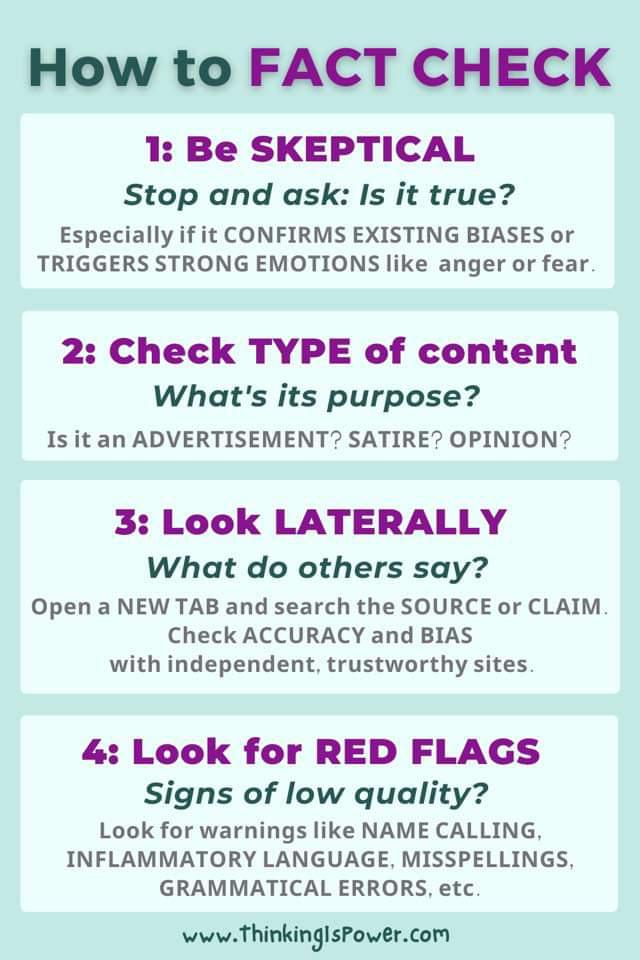
Have you ever read something that was so outrageous, you just knew it wasn’t true? You probably don’t want to share that information with your friends or family members, but what if there was a way to verify its validity before doing so? Well, there is! Fact checking is an easy process that anyone can do at home. It doesn’t take much time or effort and it can save you from sharing misinformation with others. So how do you fact check something? Here are four simple steps:
Step 1. Ask yourself, “Does this content line up with my world view?”
When you read something and it doesn’t align with your world view, you should be skeptical. When something does align, it should make you more trusting. You might think that this is obvious, but it isn’t always clear to people how to determine if a piece of content aligns with their world view or not. One way is to ask yourself: “Does this post agree with what I already believe? Am I likely going to change my mind if presented with evidence supporting a claim?”
Step 2. Look laterally, or look in alternate sources for proof of the same information.
If you’re looking for proof of the same information from other sources, look at other sources on the same topic. Also, try to find sources that are not on the same side of the political spectrum as your original source—this helps to eliminate confirmation bias and get a more unbiased view of an issue.
Step 3. Investigate the source and authors of the content you’re reading.
Investigate the source and authors of the content you’re reading. This is a crucial step in determining how trustworthy new information is, and it’s not always easy to do on your own. However, there are lots of tools out there that can help with this process. For example, if you see an article from a news agency you trust (like NPR or The New York Times), then you can feel pretty confident that they’ve done their due diligence before publishing an article online. If it’s coming from another website or publication that doesn’t have as much brand recognition—or even one without any brand recognition at all—you’ll want to look into its background before sharing it with others.
Step 4. Look out for red flags that indicate that content is misleading, like extreme language and all caps, a lack of sources and quotes, a lack of bylines, bogus contact information and images that don’t match the content.
Look out for red flags that indicate that content is misleading, like extreme language and all caps, a lack of sources and quotes, a lack of bylines, bogus contact information and images that don’t match the content. If you’re still not sure if something is true or not, ask yourself: “What would happen if I were to share this?” Don’t be afraid to double-check!
At the end of the day, the best way to fact check is to take a deep breath and go through each step carefully. The only way you can be sure that your content is true is by doing your research. And when in doubt, do some more!
